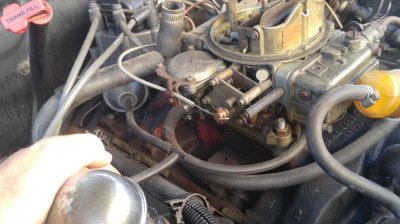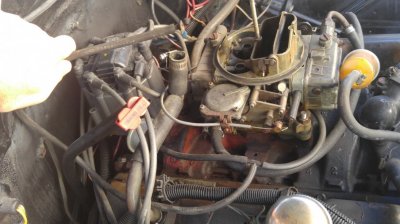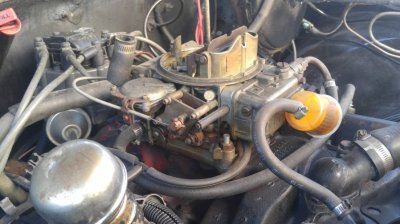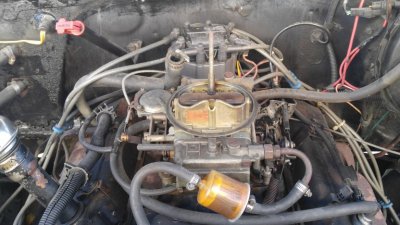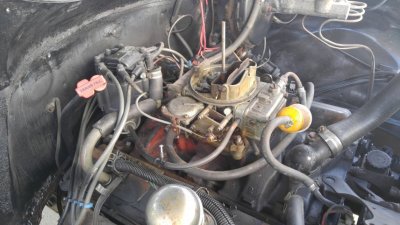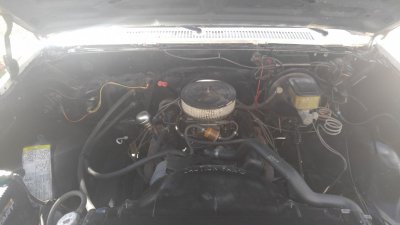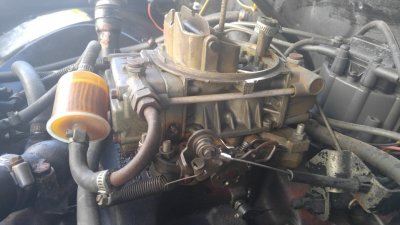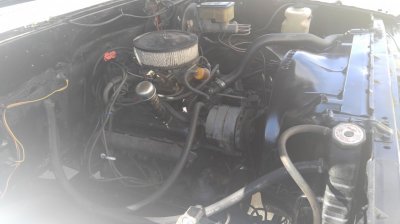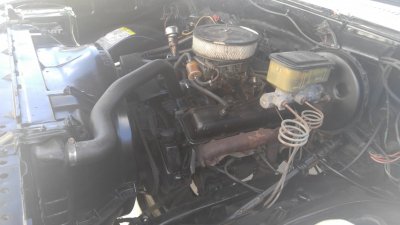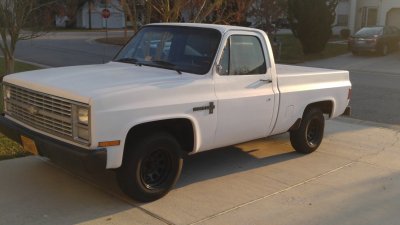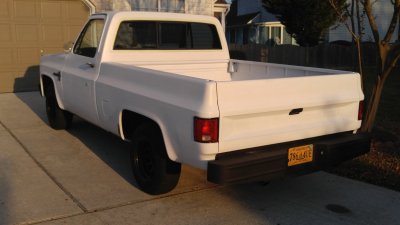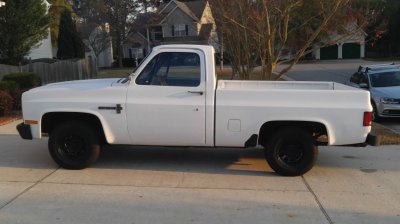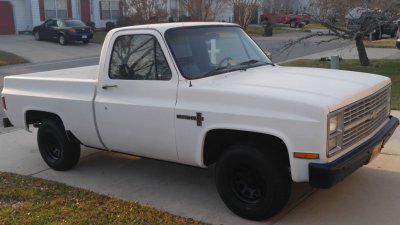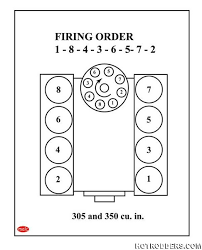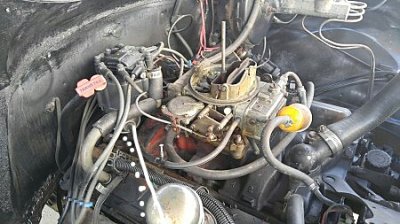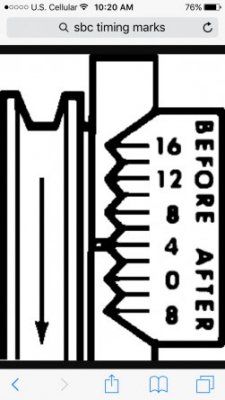Deezy
Junior Member
- Joined
- Nov 19, 2016
- Posts
- 26
- Reaction score
- 1
- Location
- Virginia
- First Name
- Blair
- Truck Year
- 1983
- Truck Model
- C-10
- Engine Size
- 350
Hey all! New to the forum, new to working on anything older than a 96, and my first time coming back to GM since my 85 Jimmy S-10 (had it when I was 16, never worked on it myself).
I picked up an 83 C-10 automatic here in Virginia and after having it about 3 weeks I have figured out I need to play with the fuel system a bit. Truck runs fine, needs about half choke to start if it's less than 50°F out, and requires about a half-pump on the throttle to start if it's been sitting more than about 18 hours.
I got to poking around in the engine bay after the first bad thing to happen to me roughly a week ago. I drove about 45 minutes and tried to turn off the truck, but it started diesel-ing for about 10 seconds before finally quitting. Other than that (well, that and one trip of high-rpm shifting, hasn't happened since), she's seeming to be "Old Faithful," which is what I want out of her. However I'm starting to get suspicious of the previous owner's carb tune and adjustments as I calculated my first tank of gas at roughly 8.5MPG and upon further inspection some funky vacuum lines. I'm not expecting 20+ MPG out of a 30 year old truck, but I was expecting double digit, low-mid teens.
So, now I'm sitting here in my driveway poking around with a carburetor, which is something I've never done before. The vacuum line I'm worried about is the one that comes off the distributor from the carb. The way it's currently set up, the line comes from the front of the carb, under the float bowl area, and goes to the distributor. However, the line has a T junction, and following that section of hose leads to an open end.
I hit the Google machine and what I found tells me that line should start on the carb, but directly above the left side mixture screw, which on mine has a plugged 2" length rubber hose (it actually looks like a cut piece of spark plug wire, I can see a bit of copper).
I'd love to hear your thoughts!
Here's a link to an imgur album in case I can't get the uploads right: 83 Chevy w/ Holley 600 http://iob.imgur.com/uYGg/rCXfptsery
I picked up an 83 C-10 automatic here in Virginia and after having it about 3 weeks I have figured out I need to play with the fuel system a bit. Truck runs fine, needs about half choke to start if it's less than 50°F out, and requires about a half-pump on the throttle to start if it's been sitting more than about 18 hours.
I got to poking around in the engine bay after the first bad thing to happen to me roughly a week ago. I drove about 45 minutes and tried to turn off the truck, but it started diesel-ing for about 10 seconds before finally quitting. Other than that (well, that and one trip of high-rpm shifting, hasn't happened since), she's seeming to be "Old Faithful," which is what I want out of her. However I'm starting to get suspicious of the previous owner's carb tune and adjustments as I calculated my first tank of gas at roughly 8.5MPG and upon further inspection some funky vacuum lines. I'm not expecting 20+ MPG out of a 30 year old truck, but I was expecting double digit, low-mid teens.
So, now I'm sitting here in my driveway poking around with a carburetor, which is something I've never done before. The vacuum line I'm worried about is the one that comes off the distributor from the carb. The way it's currently set up, the line comes from the front of the carb, under the float bowl area, and goes to the distributor. However, the line has a T junction, and following that section of hose leads to an open end.
I hit the Google machine and what I found tells me that line should start on the carb, but directly above the left side mixture screw, which on mine has a plugged 2" length rubber hose (it actually looks like a cut piece of spark plug wire, I can see a bit of copper).
I'd love to hear your thoughts!
Here's a link to an imgur album in case I can't get the uploads right: 83 Chevy w/ Holley 600 http://iob.imgur.com/uYGg/rCXfptsery


